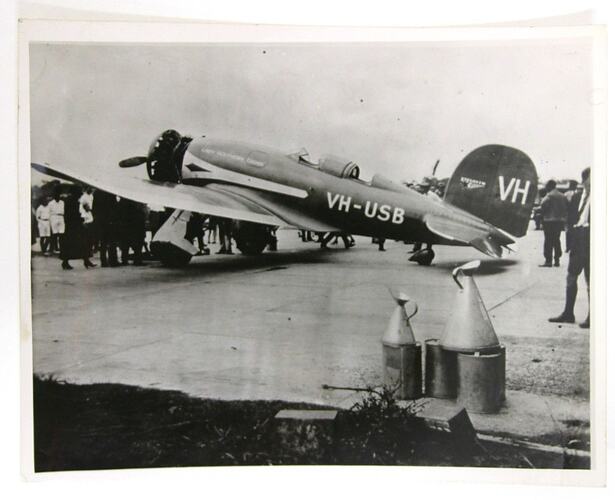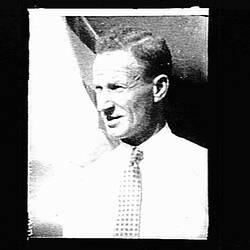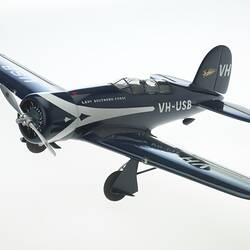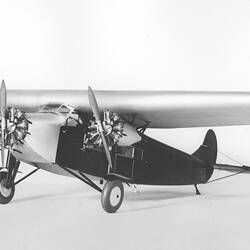Sir Charles Kingsford-Smith was never known for paying much attention to paperwork or bureaucracy. His struggle with the federal government to import and operate a new American Lockheed aircraft in Australia was a case in point. 'Smithy' (as he was widely known) wanted an aircraft to compete in the 1934 Centenary Air Race from Mildenhall, UK to Melbourne, Australia in October 1934. His 'old bus' the Fokker F.VIIb/3m 'Southern Cross' was by then, slow, worn and obsolete. Aircraft design was advancing rapidly with streamlined monoplanes taking over from wood and fabric biplanes.
Smithy was offered a British-built De Havilland Comet racing aircraft but this lacked variable pitch propellers which would restrict the fuel load he could carry compared to the other variable pitch equipped Comets already entered in the race. He looked to America to find a competitive machine in the form of a Lockheed Aircraft Corporation product. Smithy purchased a second-hand Lockheed Sirius 8A from Victor Fleming and Douglas Fairbanks at MGM Studios which was then rebuilt by Lockheed as an Altair by replacing the wing with a new unit incorporating a retractable undercarriage along with extra fuel tanks. The air race organisers had made it clear they would only accept machines registered under ICAN (International Convention for Air Navigation) rules, to which the United States was not a signatory.
The two-seat Altair arrived in Sydney on the deck games court of the SS Monterey in July 1934 with 'ANZAC' written on the fuselage which caused an immediate controversy as this name was protected by law from any sort of commercial use. It was covered up with brown paper and thousands watched as Smithy and P.G Taylor took off from Anderson Park, Neutral Bay on Sydney Harbour. After much paperwork the machine received a Certificate of Airworthiness with registration VH-USB. However repairs to cracks in the engine cowling discovered at Cloncurry prevented Smithy from reaching the UK in time to start the race and he withdrew his entry. By this time the aircraft had been re-named 'Lady Southern Cross' after Kingsford-Smith's wife. The aircraft set new Melbourne-Sydney, Sydney-Brisbane and Melbourne-Perth speed records in August and September 1934. Searching for a new project to take the place of the air race, Kingsford-Smith and Taylor decided to fly across the Pacific Ocean to the US via Fiji and Hawaii in October 1934.
Major fuel tank damage and leakage was discovered in Hawaii which required extensive repair work. The Department of Civil Aviation in Australia were never happy with the Altair and its modifications which resulted in the cancellation of its Certificate of Airworthiness in July 1935. In November 1935, Smithy, in poor health, set out from Lympne airport, UK to break the Britain to Australia speed record with Tommy Pethybridge as navigator. The Altair was given British registration G-ABUS. After stops in Athens, Baghdad and Allahabad, 'Lady Southern Cross' disappeared after passing over Rangoon, Burma. In 1937, an undercarriage leg with wheel and tyre still attached was found washed up on a beach on Aye Island in the Gulf of Burma. Despite subsequent searches nothing more has been found and the Altair's undercarriage leg is now held by the Powerhouse Museum, Sydney.
More Information
-
Keywords
-
Localities
-
Authors
-
Article types



